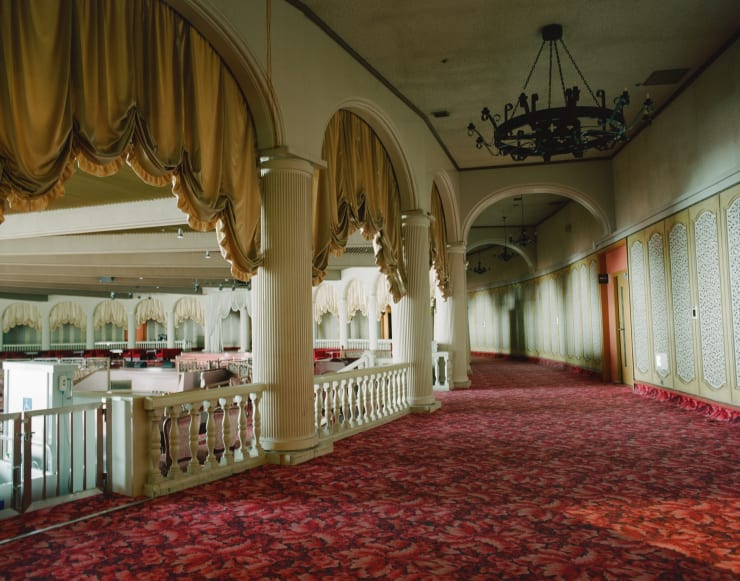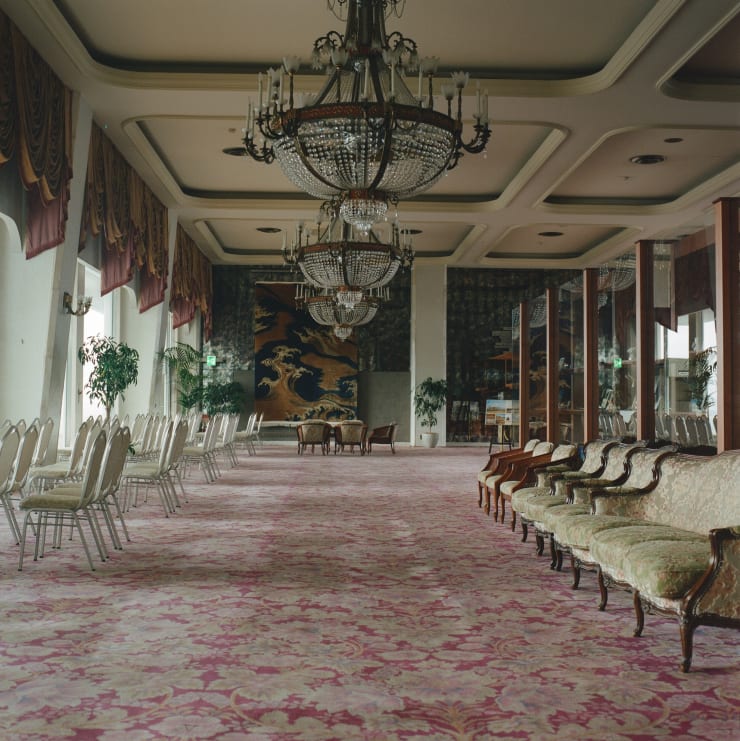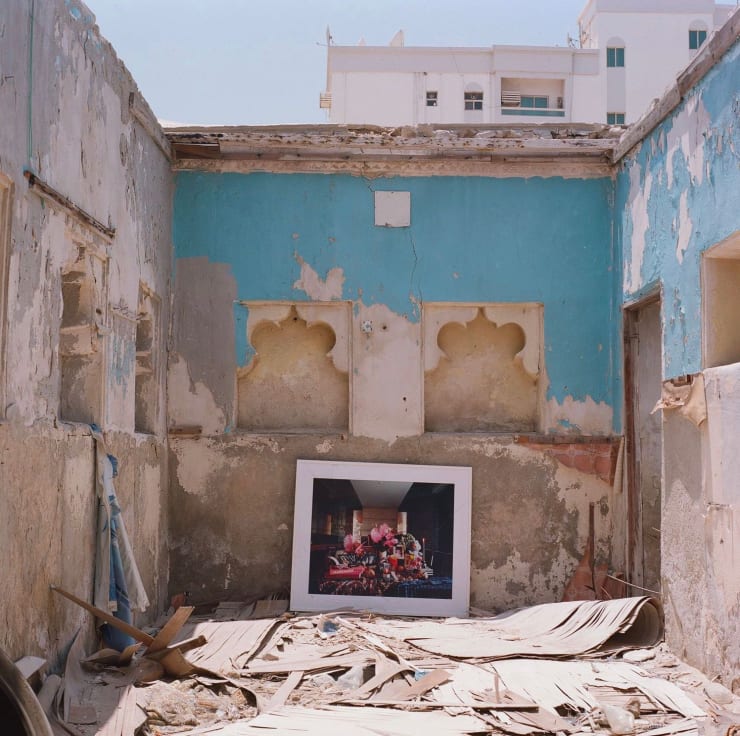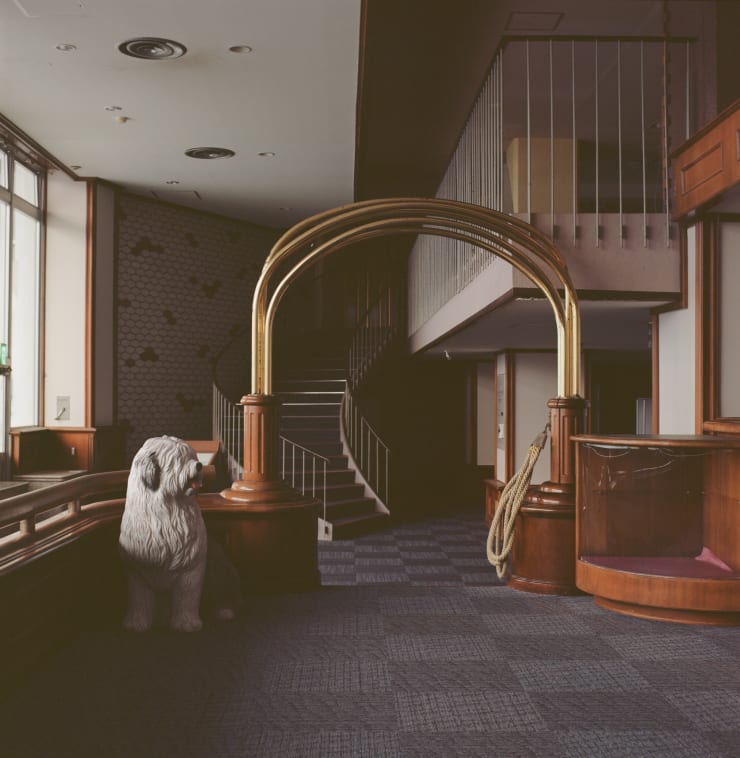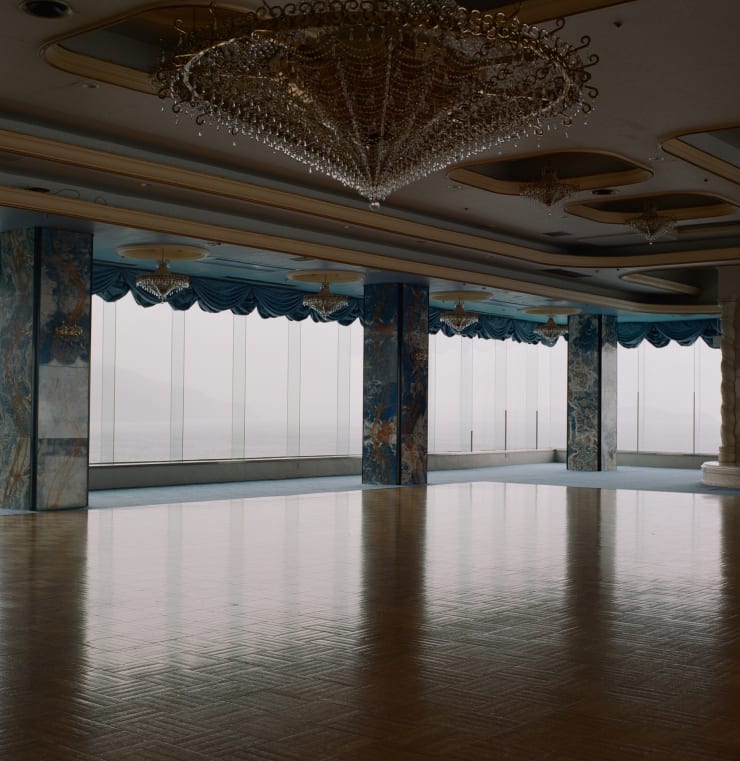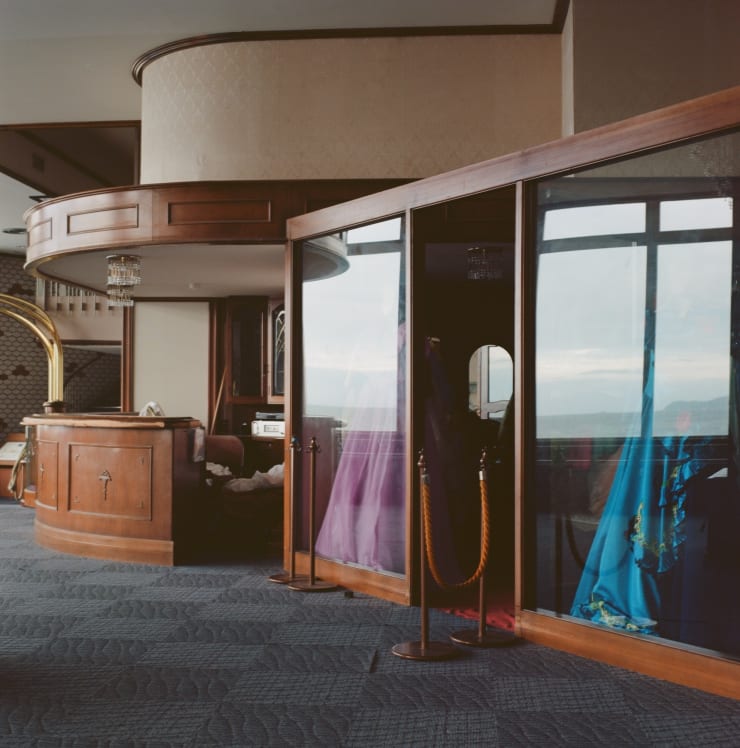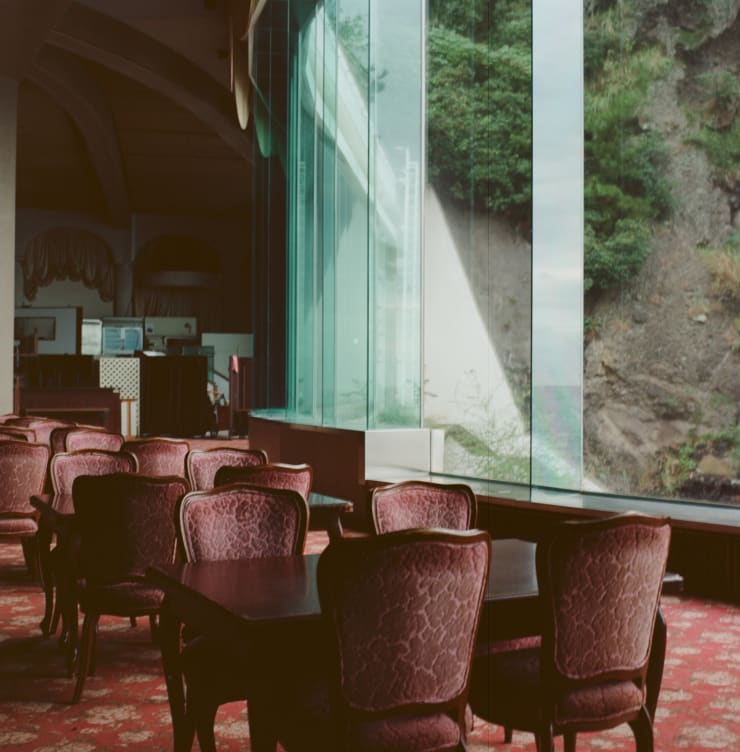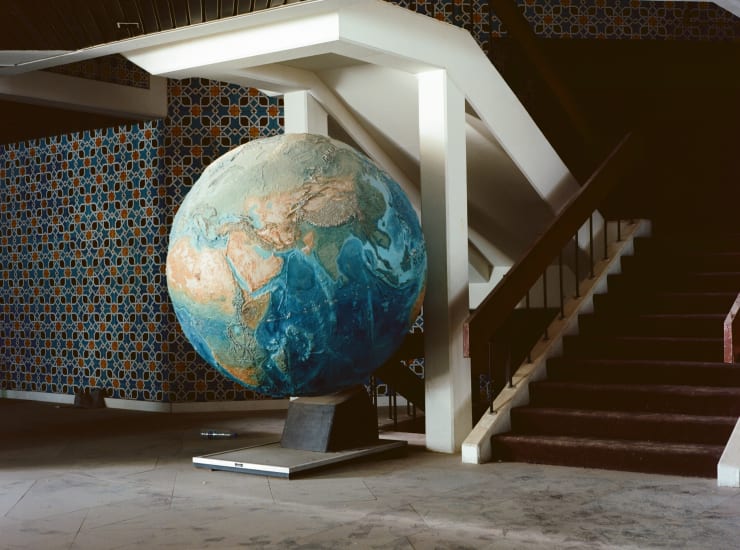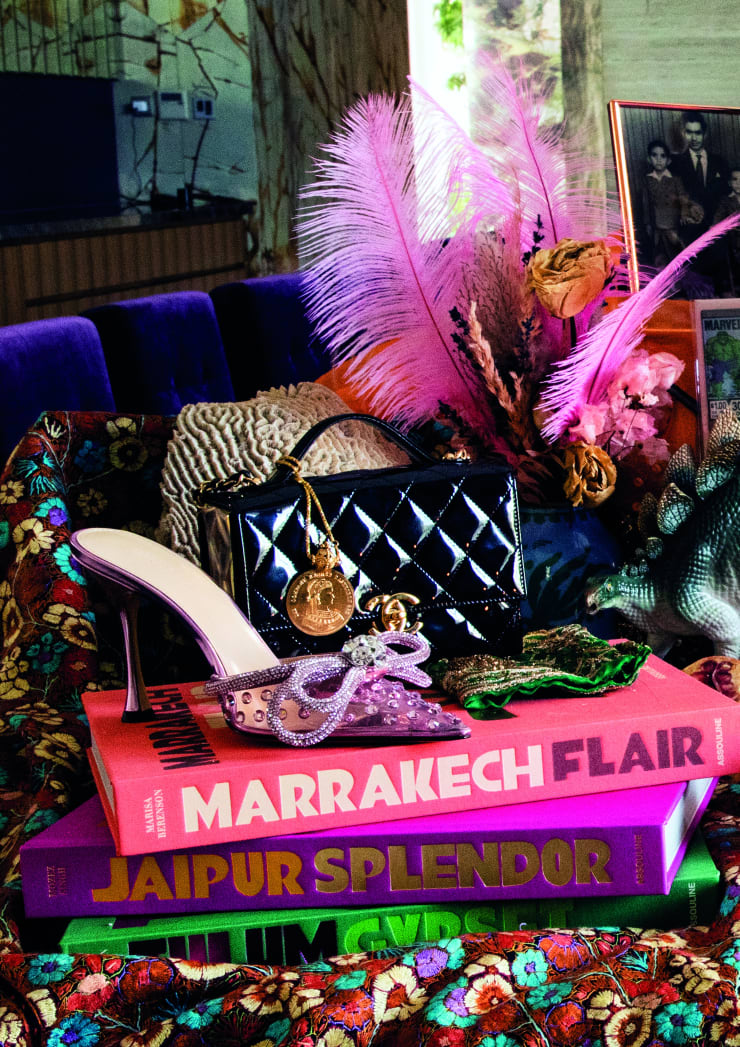-
LAMYA GARGASH
Isthmus
-
Lamya Gargash’s fifth solo show at The Third Line – Isthmus –is an exhibition that celebrates the artist’s poetics of space and recounts human experiences throughout different geographies, all without the direct presence of the human figure. Photographing selections of objects, furniture pieces, window details, and wall trimmings speaks louder than the sum of these individual design decisions – each interior element embodies a human quality and expectations of audience preferences of a certain decade, socio-economic situation, and culture.
-
-
Isthmus
Sophie Mayuko Arni -
 Lamya Gargash, A Trio of Chandeliers, 2022, C-type Print, 70 x 70cm, Edition of 5, 1AP
Lamya Gargash, A Trio of Chandeliers, 2022, C-type Print, 70 x 70cm, Edition of 5, 1AP -
-
 Lamya Gargash, A View,2022, C-type Print, 80 x 80cm, Edition of 5, 1AP
Lamya Gargash, A View,2022, C-type Print, 80 x 80cm, Edition of 5, 1AP -
-
 Lamya Gargash, The Staircase, 2018, C-type Print, 52 x 70cm, Edition of 5, 1AP
Lamya Gargash, The Staircase, 2018, C-type Print, 52 x 70cm, Edition of 5, 1AP -
 Lamya Gargash, Old English Sheepdog,2022, C-type Print, 80 x 80cm, Edition of 5, 1AP
Lamya Gargash, Old English Sheepdog,2022, C-type Print, 80 x 80cm, Edition of 5, 1AP -
-
 Lamya Gargash, Family Still Life, 2023, C-type Print, 124 x 157 cm, Edition of 3, 1AP
Lamya Gargash, Family Still Life, 2023, C-type Print, 124 x 157 cm, Edition of 3, 1AP -
-
 Lamya Gargash, Family Still Life in Old Family Home,2023, C-type Print, 80x80cm, Edition of 5, 1AP
Lamya Gargash, Family Still Life in Old Family Home,2023, C-type Print, 80x80cm, Edition of 5, 1AP -
-
-
 Lamya GargashArches & Drapes, 2022C-type Print52.00 x 70.00 cmEdition of 5, 1AP
Lamya GargashArches & Drapes, 2022C-type Print52.00 x 70.00 cmEdition of 5, 1AP -
 Lamya GargashA Trio of Chandeliers, 2022C-type Print70.00 x 70.00 cmEdition of 5, 1AP
Lamya GargashA Trio of Chandeliers, 2022C-type Print70.00 x 70.00 cmEdition of 5, 1AP -
 Lamya GargashA Meaningful Conversation, 2022C-type Print120.00 x 120.00 cmEdition of 3, 1AP
Lamya GargashA Meaningful Conversation, 2022C-type Print120.00 x 120.00 cmEdition of 3, 1AP -
 Lamya GargashA View, 2022C-type Print80.00 x 80.00 cmEdition of 5, 1AP
Lamya GargashA View, 2022C-type Print80.00 x 80.00 cmEdition of 5, 1AP -
 Lamya GargashExistence, 2022C-type Print70.00 x 70.00 cmEdition of 5, 1AP
Lamya GargashExistence, 2022C-type Print70.00 x 70.00 cmEdition of 5, 1AP -
 Lamya GargashFamily Still Life, 2023C-type print124.00 x 157.00 cmEdition of 3, 1AP
Lamya GargashFamily Still Life, 2023C-type print124.00 x 157.00 cmEdition of 3, 1AP -
 Lamya GargashFamily Still Life in Old Family Home, 2023C-type Print80.00 x 80.00 cmEdition of 5, 1AP
Lamya GargashFamily Still Life in Old Family Home, 2023C-type Print80.00 x 80.00 cmEdition of 5, 1AP -
 Lamya GargashOld English Sheepdog, 2022C-type Print80.00 x 80.00 cmEdition of 5, 1AP
Lamya GargashOld English Sheepdog, 2022C-type Print80.00 x 80.00 cmEdition of 5, 1AP -
 Lamya GargashReflection, 2022C-type Print70.00 x 70.00 cmEdition of 5, 1AP
Lamya GargashReflection, 2022C-type Print70.00 x 70.00 cmEdition of 5, 1AP -
 Lamya GargashThe Costume Department, 2022C-type Print70.00 x 70.00 cmEdition of 5, 1AP
Lamya GargashThe Costume Department, 2022C-type Print70.00 x 70.00 cmEdition of 5, 1AP -
 Lamya GargashThe Formal Dining Chairs, 2022C-type Print80.00 x 80.00 cmEdition of 5, 1AP
Lamya GargashThe Formal Dining Chairs, 2022C-type Print80.00 x 80.00 cmEdition of 5, 1AP -
 Lamya GargashThe Globe, 2014C-type Print90.00 x 120.00 cmEdition of 3, 1AP
Lamya GargashThe Globe, 2014C-type Print90.00 x 120.00 cmEdition of 3, 1AP -
 Lamya GargashFamily Still Life (Detail I), 2023Archival Inkjet Print59.40 x 42.00 cmEdition of 8, 2AP
Lamya GargashFamily Still Life (Detail I), 2023Archival Inkjet Print59.40 x 42.00 cmEdition of 8, 2AP -
 Lamya GargashFamily Still Life (Detail II), 2023Archival Inkjet Print59.40 x 42.00 cmEdition of 8, 2AP
Lamya GargashFamily Still Life (Detail II), 2023Archival Inkjet Print59.40 x 42.00 cmEdition of 8, 2AP -
 Lamya GargashFamily Still Life (Detail III), 2023Archival Inkjet Print42.00 x 29.70 cmEdition of 8, 2AP
Lamya GargashFamily Still Life (Detail III), 2023Archival Inkjet Print42.00 x 29.70 cmEdition of 8, 2AP
-
-
About Lamya Gargash
Emirati artist Lamya Gargash was born in 1982 and currently lives and works in Dubai, UAE. After graduating from the American University of Sharjah in 2004, she moved to London to pursue a postgraduate degree in Communication Design from Central Saint Martins. Gargash is heavily inspired by inhabited and abandoned spaces as well as cultural heritage in a context of rapid change. Exploring modernity, mortality, identity and the banal, Gargash captures the beauty of human trace and the value of the mundane.
Gargash was selected to represent the UAE in its debut pavilion at the Venice Biennale in 2009 where she showcased her Familial series. In the same year, she also participated in the 9th Sharjah Biennial in Sharjah, UAE with her Majlis series. Gargash's works have been included in solo and group shows around the world. Solo shows include; Sahwa, The Third Line, Dubai, UAE (2020); Traces, The Third Line, Dubai, UAE (2014); Through the Looking Glass, The Third Line, Dubai, UAE (2012); Presence, Galleria Marabini, Bologna, Italy (2012); Presence, Galerie Brigitte Schenk, Cologne, Germany (2010); Presence, The Third Line, Doha, Qatar (2008).
Her work is part of the permanent collection of the Barjeel Art Foundation, Sharjah, UAE and Sharjah Art Foundation, Sharjah, UAE.
-
About Sophie Mayuko Arni
Sophie Mayuko Arni is a curator and editor based between Tokyo and Dubai. She is the curator of the "East-East: UAE meets Japan" exhibition series, which has been featured in Arab News, The National, Dubai TV, Khaleej Times, Identity Magazine, Vogue Arabia, and Bijutsu Techo. With over 20 participating Emirati, UAE-based, and Japanese artists, the exhibition is currently at its fifth volume and has toured multiple cities in the UAE and Japan, including Abu Dhabi (NYU Abu Dhabi Project Space, 2016), Dubai (CHI-KA Space at Alserkal Avenue, 2017-18), Tokyo (BLOCK HOUSE, HB.Nezu, 2020), and Atami (ATAMI ART GRANT at Hotel Acao Annex, 2022). In 2022, she was recognized by the UAE Embassy in Japan for her efforts to bridge the UAE and Japan artistic scenes as part of the 50th Anniversary of UAE-Japan Diplomatic Relations.
Originally Swiss-Japanese, Sophie is also the Founder and Editor-in-Chief of Global Art Daily, a publication dedicated to the growth of the UAE’s art scene from a global perspective. Appearing on panel talks about Asian and Arab contemporary art, Sophie has also written for Arab News Japan, SOLE Magazine, NYLON Japan, and The Fiker Institute. She graduated with a B.A. in Art & Art History from NYU Abu Dhabi and with an MPhil in Arts Studies and Curatorial Practices from Tokyo University of the Arts.
Lamya Gargash : Isthmus
Past viewing_room







